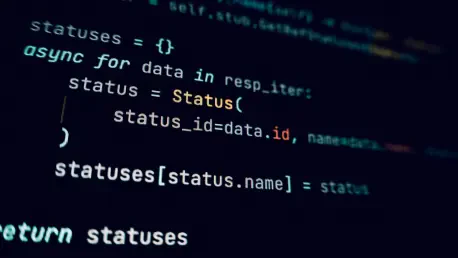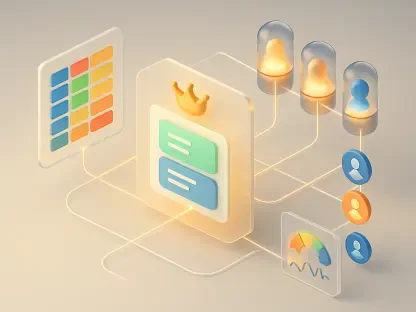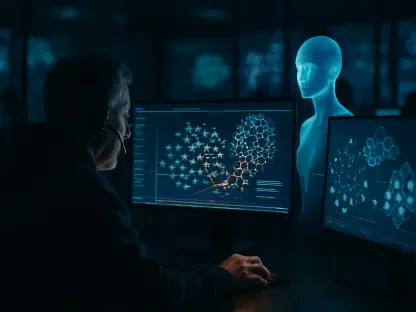In today’s rapidly evolving technological landscape, quantum computing stands at the frontier of innovation. Chloe Maraina, an expert in business intelligence and data science, brings her rich analytical background to illuminate the complex world of quantum error correction. Here, we’ll delve into the groundbreaking advancements made by Nord Quantique and their potential implications for the broader quantum computing industry.
Can you explain what Nord Quantique’s recent breakthrough in quantum error correction involves?
The breakthrough Nord Quantique has achieved revolves around improving quantum error correction, which is crucial for making quantum computers viable. They’ve developed a method where each qubit holds multiple photons, using these redundant photons for error correction. This approach minimizes the need for extra qubits, essentially allowing the creation of larger, functional quantum computers without the typical overhead required for error correction.
Why are errors considered the top obstacle in developing usable quantum computers?
Errors are a significant hurdle because qubits, the building blocks of quantum computers, are incredibly sensitive and prone to errors due to environmental interference and instability. These errors can disrupt computations, making it paramount to correct them efficiently to harness the full potential of quantum computing. Without effective error correction, the reliability of quantum computers is compromised, rendering them unusable in practical applications.
How do most quantum computing companies currently deal with errors in qubits?
Most companies address qubit errors through redundancy. They add extra qubits to compensate for those that fail or degrade. This involves creating many physical qubits to form a single “logical qubit,” correcting errors that arise during computations. However, this approach can lead to increased complexity and larger systems, which are harder to scale efficiently.
What is meant by the term “escape velocity” in the context of quantum computing?
In quantum computing, “escape velocity” refers to reaching a point where adding more qubits does not exponentially increase error rates, effectively lowering the error rate with additional qubits. This concept is crucial for developing scalable quantum systems, as it determines the feasibility of building large-scale quantum computers.
How does Nord Quantique’s approach differ from traditional methods of error correction in quantum computing?
Nord Quantique’s approach contrasts traditional methods by focusing on the inside of the qubit itself rather than adding redundant qubits externally. By using multiple photons in a single qubit, they turn conventional error correction techniques inside out, allowing one physical qubit to serve as one logical qubit, simplifying the error correction process and reducing the number of physical qubits needed.
Could you elaborate on how a qubit holding multiple photons aids in error correction?
With multiple photons in a single qubit, if one photon experiences an error, others can help correct it. This multiplicity provides a built-in system for error detection and correction, improving reliability and potentially enhancing the qubit’s overall performance and reducing the heavy reliance on additional qubits for error correction.
What are “logical qubits,” and how do they relate to physical qubits?
Logical qubits are the error-corrected, effective qubits used in computations. They are constructed from multiple physical qubits engineered to work together to form a robust single logical unit. This combination effectively masks the errors of individual physical qubits, providing a stable computational unit in quantum systems.
Can you explain the 1,000-to-one ratio concerning error correction in quantum computing?
The 1,000-to-one ratio refers to the current industry standard, where on average, about 1,000 physical qubits are needed to construct one logical qubit due to error correction needs. This is a significant barrier to scaling quantum computers, as it demands large numbers of physical qubits that are currently difficult to manage and maintain.
How does Nord Quantique’s technology potentially reduce the need for a large number of qubits?
By employing a novel method where each qubit contains multiple photons, Nord Quantique dramatically reduces the number of additional physical qubits needed for error correction. This reduces computational overhead and lowers the required physical footprint and energy consumption. This advancement could make quantum computing more accessible and practical for large-scale use.
What advancements has Nord Quantique made in increasing the types of errors their qubits can correct?
Initially, Nord Quantique’s qubits could correct two types of errors. Their latest advancement introduces an additional mode to these qubits, enabling them to correct six types of errors. This expansion significantly enhances the resilience and accuracy of their systems, paving the way for further developments in error correction technology.
What role does the additional mode in Nord Quantique’s qubits play in error correction?
The additional mode allows qubits to accommodate and correct more error types, increasing their robustness. By broadening the scope of correctable errors, these qubits can maintain accurate computations over longer periods and under more diverse operational conditions, improving the overall effectiveness of quantum computers.
Could you describe the physical size of Nord Quantique’s qubits, and what the setup requires?
Nord Quantique’s qubits are fairly compact, about the size of a walnut. However, their system, employing superconducting technology, requires a significant setup known as a “chandelier,” which occupies about four-and-a-half square meters of floor space. This setup is essential to maintain the very low temperatures needed for qubit operation.
How many qubits can a single superconducting chandelier support, according to Nord Quantique?
A single chandelier can support upwards of 2,000 qubits with the current technology. This capability highlights an impressive step towards accommodating a significant number of qubits within a relatively contained physical space, crucial for scaling up quantum computing systems effectively.
When does Nord Quantique expect to have more than 100 logical qubits, and what are their plans beyond that point?
Nord Quantique aims to have over 100 logical qubits by 2029. They plan to scale up from there, targeting 2,000 logical qubits in subsequent phases. This roadmap outlines their strategic vision to enhance and expand their quantum capabilities progressively.
How might Nord Quantique’s technology impact the quantum computing industry in the near future?
Nord Quantique’s innovations could substantially influence the quantum computing industry by providing a more scalable and efficient model for error correction, potentially adopted by other key players in the field. This approach may lower the barriers to achieving powerful quantum systems, accelerating the industry’s overall progress.
Considering Nord Quantique makes superconducting qubits, are there potential collaborations with companies like IBM or Google?
Given that IBM and Google also use superconducting qubits, Nord Quantique’s unique approach could complement existing technologies. Collaborations might emerge where their better qubit designs are integrated into the architectures of these established companies, facilitating quicker advancements in quantum computing.
How does the performance of Nord Quantique compare with other breakthroughs in the quantum computing industry, such as those from D-Wave or Equal1?
While Nord Quantique focuses on error correction using multiple photons in a single qubit, D-Wave and Equal1 pursue different quantum computing methodologies. Each company contributes uniquely to the field, with varying degrees of scalability and practical applicability. Nordic Quantique’s innovations, however, position it favorably in the ongoing race to develop practical quantum computers.
Could you analyze the significance of recent investments and announcements in the quantum computing field, including those from D-Wave, IonQ, and others?
The significant investment influx, such as IonQ’s $360 million funding, highlights the industry’s growing momentum. These investments reflect confidence in quantum computing’s potential, encouraging further research and technological development to overcome existing challenges and bring viable solutions to market.
What can you tell us about Cisco’s recent announcement regarding a quantum entanglement chip?
Cisco’s announcement of a quantum entanglement chip marks an exciting development in networking quantum systems. Developed with UCSB, this chip generates entangled photons that can instantaneously transmit quantum states, potentially revolutionizing secure communications and opening new pathways for quantum network architectures.
How do you see Nord Quantique’s innovations influencing the future landscape of quantum computing?
Their approach to error correction could redefine standards in quantum computing, making the technology more accessible and practical. By reducing qubit requirements and enhancing system resilience, Nord Quantique’s innovations may act as a catalyst for broader adoption and integration of quantum solutions across various industries.









